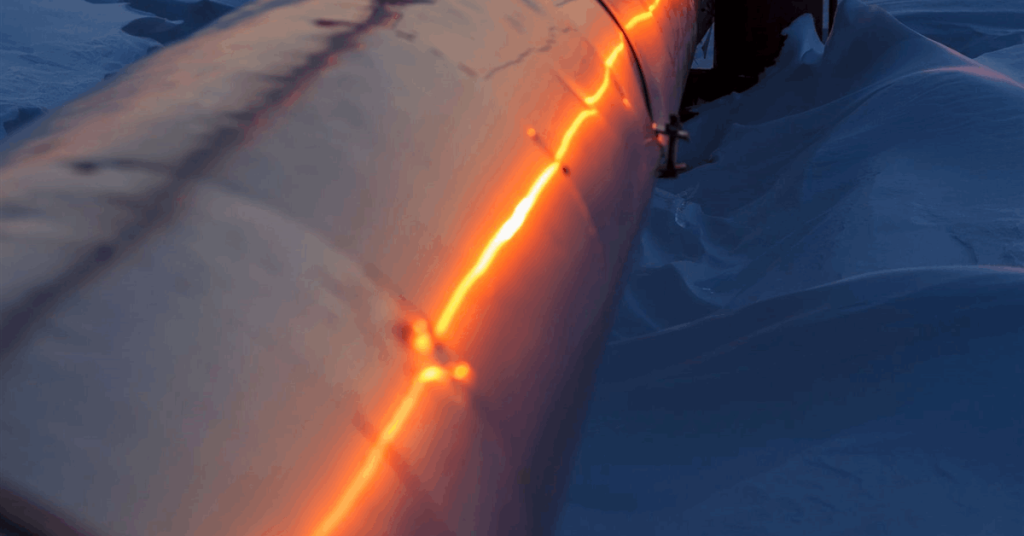Gazprom PJSC has fulfilled 100 billion cubic meters (3.53 trillion cubic feet) of the 1.14 trillion cubic meters of natural gas it committed to China National Petroleum Corp. (CNPC) under a 30-year deal signed 2014, the Russian state-owned company said.
Shipments to CNPC under the Power of Siberia pipeline supply agreement began late 2019 when the pipeline stretching over 3,000 kilometers (1,864.11 miles) went onstream. The unified gas transmission system, which carries gas from Irkutsk and Yakutia fields to Russia’s Far East and China, has exceeded its annual contractual obligation of 38 Bcm to CNPC since 2020 according to Gazprom.
Daily export via the route reached a new record high in March 2025, Gazprom said without disclosing the volume. Recently China requested for supply to continue even as the pipeline underwent scheduled maintenance. That maintenance was completed April 4, 2025, and supplies since resumed their maximum level according to Gazprom.
“Throughout 2024, Gazprom’s pipeline gas supplies grew by more than 35 percent and covered about a quarter of China’s additional demand for gas”, Gazprom said in an online statement announcing the 100 Bcm milestone.
Meanwhile Gazprom chair Alexey Miller reaffirmed, “In 2027, Russian gas will start to be supplied to China via the second, i.e. Far Eastern, pipeline route”.
“As our Chinese colleagues say, the longer the friendship is the stronger it is. The projects like Power of Siberia and the Far Eastern route mean more than supplies of clean energy. They mean a strong bond between our countries and people, as well as a mutually beneficial cooperation for many years to come”, Miller added.
In 2022 Gazprom and CNPC penned a long-term agreement for gas supply for China via the Far Eastern pipeline. “As soon as the project reaches its full capacity, the amount of Russian pipeline gas supplies to China is going to grow by 10 billion cubic meters, totaling 48 billion cubic meters per year (including deliveries via the Power of Siberia gas trunkline)”, Gazprom said in a press release February 4, 2022.
In November 2023, Gazprom, CNPC and China Oil & Gas Pipeline Network Corp. signed an agreement that governs cooperation between the parties on the construction of the trans-border section of the Far Eastern pipeline to cross the Ussuri River near Dalnerechensk, Russia and Hulin, China.
Earlier in 2023 Gazprom achieved its maiden delivery of liquefied natural gas using the Northern Sea Route in the Arctic Ocean, meant for China. The Arctic shortcut between Europe and Asia allows for faster shipping compared to the traditional routes through Egypt’s Suez Canal and South Africa’s Cape of Good Hope.
Gazprom’s private competitor Novatek PJSC has already been using the Northern Sea Route to deliver gas to China. Novatek completed its first gas delivery to China via the route September 2010. The cargo for state-owned China National Offshore Oil Corp. took 22 days from the Russian port city of Murmansk near the border with Finland to its destination, the port of Ningbo, a city on the eastern coast of mainland China. The voyage was about half the time it would have taken through the Suez Canal, Novatek at the time.
To contact the author, email jov.onsat@rigzone.com
What do you think? We’d love to hear from you, join the conversation on the
Rigzone Energy Network.
The Rigzone Energy Network is a new social experience created for you and all energy professionals to Speak Up about our industry, share knowledge, connect with peers and industry insiders and engage in a professional community that will empower your career in energy.
element
var scriptTag = document.createElement(‘script’);
scriptTag.src = url;
scriptTag.async = true;
scriptTag.onload = implementationCode;
scriptTag.onreadystatechange = implementationCode;
location.appendChild(scriptTag);
};
var div = document.getElementById(‘rigzonelogo’);
div.innerHTML += ” +
‘‘ +
”;
var initJobSearch = function () {
//console.log(“call back”);
}
var addMetaPixel = function () {
if (-1 > -1 || -1 > -1) {
/*Meta Pixel Code*/
!function(f,b,e,v,n,t,s)
{if(f.fbq)return;n=f.fbq=function(){n.callMethod?
n.callMethod.apply(n,arguments):n.queue.push(arguments)};
if(!f._fbq)f._fbq=n;n.push=n;n.loaded=!0;n.version=’2.0′;
n.queue=[];t=b.createElement(e);t.async=!0;
t.src=v;s=b.getElementsByTagName(e)[0];
s.parentNode.insertBefore(t,s)}(window, document,’script’,
‘https://connect.facebook.net/en_US/fbevents.js’);
fbq(‘init’, ‘1517407191885185’);
fbq(‘track’, ‘PageView’);
/*End Meta Pixel Code*/
} else if (0 > -1 && 78 > -1)
{
/*Meta Pixel Code*/
!function(f,b,e,v,n,t,s)
{if(f.fbq)return;n=f.fbq=function(){n.callMethod?
n.callMethod.apply(n,arguments):n.queue.push(arguments)};
if(!f._fbq)f._fbq=n;n.push=n;n.loaded=!0;n.version=’2.0′;
n.queue=[];t=b.createElement(e);t.async=!0;
t.src=v;s=b.getElementsByTagName(e)[0];
s.parentNode.insertBefore(t,s)}(window, document,’script’,
‘https://connect.facebook.net/en_US/fbevents.js’);
fbq(‘init’, ‘1517407191885185’);
fbq(‘track’, ‘PageView’);
/*End Meta Pixel Code*/
}
}
// function gtmFunctionForLayout()
// {
//loadJS(“https://www.googletagmanager.com/gtag/js?id=G-K6ZDLWV6VX”, initJobSearch, document.body);
//}
// window.onload = (e => {
// setTimeout(
// function () {
// document.addEventListener(“DOMContentLoaded”, function () {
// // Select all anchor elements with class ‘ui-tabs-anchor’
// const anchors = document.querySelectorAll(‘a .ui-tabs-anchor’);
// // Loop through each anchor and remove the role attribute if it is set to “presentation”
// anchors.forEach(anchor => {
// if (anchor.getAttribute(‘role’) === ‘presentation’) {
// anchor.removeAttribute(‘role’);
// }
// });
// });
// }
// , 200);
//});

